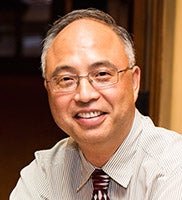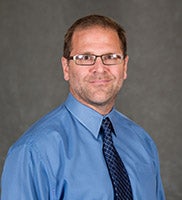Chemistry Department Shines in Grant Awards




Chemistry Department Chair YuYe Tong and professors Sarah Stoll, Steve Metallo, and Travis Holman (L-R) have all received major research grants from the U.S. government in recent months.
September 20, 2016 — Four professors from Georgetown College’s Department of Chemistry have received major grants from various branches of the U.S. government in the last three months, marking an exciting period for one of the university’s most prolific research areas.
Professors Steve Metallo, Travis Holman, and Sarah Stoll and Department Chair YuYe Tong all won competitive grants to continue their research in a number of fascinating fields, with potential applications from designing more effective drugs to cutting greenhouse gas emissions.
Metallo received a three-year, $453,764 grant from the National Institutes of Health for his proposal, “The binding of small molecules to disordered proteins: specificity, affinity, and portability.” He aims to determine the interactions and energetics that underlie the specific binding interactions between small molecules and disordered proteins. These interactions redefine what constitutes a small‐molecule binding site on a protein and what is a “druggable target”.
In the long term, Metallo’s research may be used to help bioengineers design drugs to effectively target diseases such as cancer or/and Alzheimer’s disease.
“The proteins in our body are very complex and intrinsically disordered,” Tong said. “How a small molecule bonds to a site and changes the function of the protein has deep implications for the cure of diseases.”
Holman, meanwhile, received a three-year, $455,000 grant from the National Science Foundation to study develop molecules materials for the complexation of gases. In the “Porous Molecular Solids with Zero-Dimensional Pores” project, Holman’s lab aims to study systematically sorbent-sorbate interaction in zero dimensional (0D) porous solids that are a class of still relatively unappreciated and understudied porous materials with emerging new properties of confining and releasing gases. If successful, this material could contribute to major advances in gas storage and separation.
“For example, you could catch greenhouse gases — CO2, methane — you could trap these highly stable gases inside a porous material, then induce a chemical reaction that would produce useful chemicals,” Tong said.
Stoll received a highly competitive three-year, $395,000 grant from the NSF’s Division of Materials Research for her project, “Magnetic Semiconductor Solid Solutions.” This research will focus on the magnetocaloric and magneto-optical effects of magnetic europium chalcogenides based semiconductor alloys. These alloys’ novel properties could be of potential use in interconverting magnetic, electronic and optical signals in novel solid-state devices. Stoll’s research in materials synthesis and associated magnetocaloric and magneto-optical properties characterization could help develop high-performance magneto-optical electronics and storage devices.
“Even with the same-sized drive, you can store more and more information with better performing materials,” Tong said.
Tong himself received a two-year, $340,000 grant from the Department of Energy for an especially ambitious project, “Exploring Electrocatalysis of Methane on Transition Metal Surfaces.” Tong hopes to develop an catalytic process by which common but environmentally harmful methane gas can be converted to methanol or other useful chemicals through electrochemistry — cutting out the massive expenditure of energy the current steam-reforming process now requires. It’s a process that has been tried before without success, but Tong hopes a new approach can make it possible.
“There’s a lot of methane coming out of the U.S. energy supply, primarily through shale gas,” Tong said. “We’re trying to make this reaction feasible at room temperature, with a much lower cost of energy.”
Tong emphasized the role of chemistry students — particularly the strong Ph.D. program — in the department’s impressive spate of successful grant applications.
“It’s the culmination of a lot of students’ work as well, to get to this point where the reviewers come and say ‘Wow, that’s a good project worth of funding!’” Tong said.
— Patrick Curran
Related Information
Other major grants to chemistry faculty members in recent years include:
- Professor Jennifer Swift, “Engineering Defects in Molecular Hydrates” with a funding level of $485,000 for three years (NSF, April 2016)
- Professor Richard Weiss, “Design of Molecular Gels with Exceptional Structural, Dynamic and Mechanical Properties” with a funding level of $539,999 (NSF, September 2015)
- Professor Christian Wolf, “Development of stereodynamic chemosensors for chiroptical analysis” with a funding level of $442,368 (NSF, August 2015)
- Professor Toshiko Ichiye, “Computational Studies of Aqueous Solvation of Proteins” with a funding level of $450,000 (NSF, May 2015)